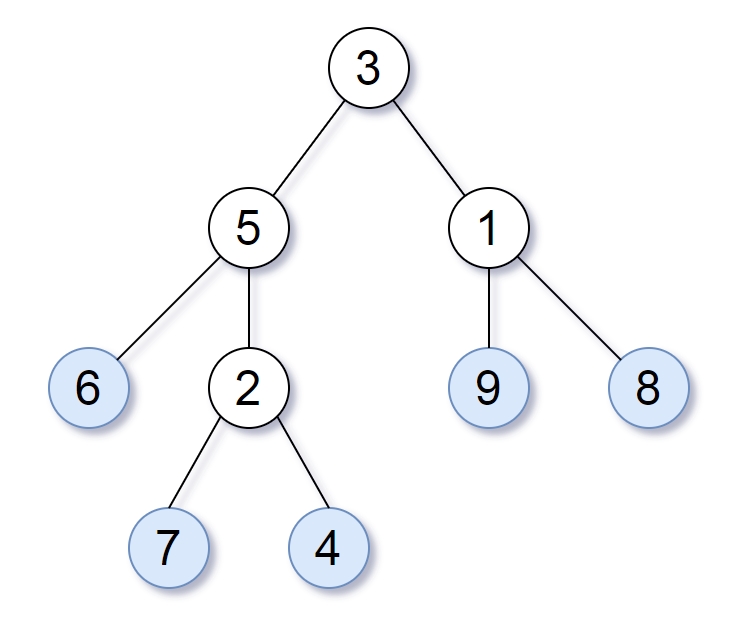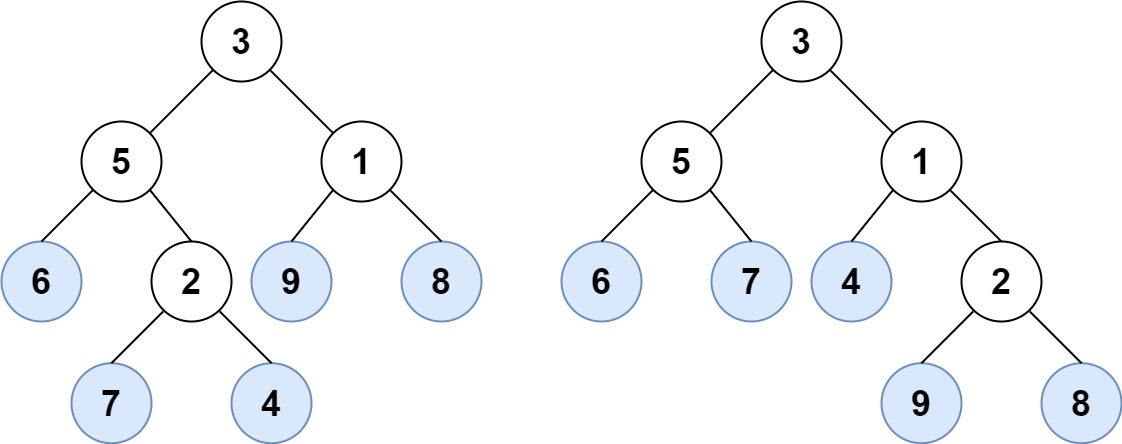872. Leaf-Similar Trees
LeetCode 872. Leaf-Similar Trees
Description
Consider all the leaves of a binary tree, from left to right order, the values of those leaves form a leaf value sequence .

For example, in the given tree above, the leaf value sequence is (6, 7, 4, 9, 8).
Two binary trees are considered leaf-similar if their leaf value sequence is the same.
Return true if and only if the two given trees with head nodes root1 and root2 are leaf-similar.
Example 1:

Example 2:
Constraints:
The number of nodes in each tree will be in the range
[1, 200].Both of the given trees will have values in the range
[0, 200].
Tags
Tree, Depth-first Search
Solution
Obtain all leaves from both tree, respectively, then compare both leaves collections (arrays).
Complexity
Time complexity:
Space complexity:
Code
Last updated
Was this helpful?